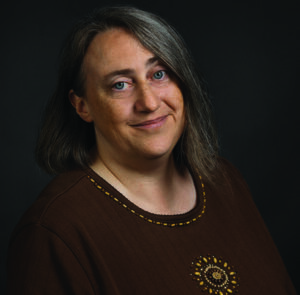 There’s a funny meme going round social media about the naivete of conspiracy theorists: “My gut is that most of them have never been project managers. Their optimism is adorable.” And the adage may be that “too many cooks spoil the broth,” but I think it’s more like “too many stakeholders can overcomplicate anything.” That can apply to small teams working on relatively simple projects (a group of editors working on a single BPI issue, for example) as much as to the whole biopharmaceutical industry and the regulatory, commercial, and technical/scientific ecosystem that surrounds it. Sometimes it’s a wonder that any of us in publishing or drug development manages to accomplish anything on a given day. And yet we do.
There’s a funny meme going round social media about the naivete of conspiracy theorists: “My gut is that most of them have never been project managers. Their optimism is adorable.” And the adage may be that “too many cooks spoil the broth,” but I think it’s more like “too many stakeholders can overcomplicate anything.” That can apply to small teams working on relatively simple projects (a group of editors working on a single BPI issue, for example) as much as to the whole biopharmaceutical industry and the regulatory, commercial, and technical/scientific ecosystem that surrounds it. Sometimes it’s a wonder that any of us in publishing or drug development manages to accomplish anything on a given day. And yet we do.
Consider the European Union — a timely example right now if ever there was one. I’ve never imagined it could move as fast as it has in response to Russia’s invasion of Ukraine. Once-reluctant would-be member states are even getting fast-tracked for entry by a system that otherwise seems to move glacially slow by design. It’s often said that the US federal government was indeed meant to move at a “deliberate pace” — and that such a pace can have trouble keeping up with developments in our rapidly changing world. We have to resolve a broad range of disparate opinions in a majority-rule system, but in may ways our European friends have us beat. They need to do the same with over two dozen widely varied countries and cultures that share a complicated history of conflict and shifting alliances going back thousands of years.
So when a European regulation manages to clarify perfectly something that was hitherto spoken of in vague and discordant terms, you’ve got to hand it to the folks who made that happen. Our issue theme this month is “Advanced Therapies,” whereas in past years it has been “Cell and Gene Therapies” and before that “Regenerative Medicine.” Was that too broad or too narrow? The answer depended on who you asked. The designer in me just prefers how the new version looks on our cover. But we can thank the European regulators for providing a definitive answer in EC 1394/2007 that I hope US regulators will take up just as we have at BPI.
Three types of medicines qualify as “advanced therapy medicinal products” (ATMPs) in Europe: gene therapies, somatic cell therapies, and tissue therapies. What they all have in common is bioengineering. ATMPs are manipulated in some way, making them much more complicated — advanced, you might say — than traditional organ, tissue, and cell transplants were. And recombinant-DNA technology links them directly to BPI’s primary subject matter.
Biopharmaceutical protein products are advanced in their own way, of course, and I’ve been in awe of the people working with them for years now. The industry has made huge strides toward standardizing development approaches and manufacturing strategies that enabled the “well-characterized biotechnology products” paradigm to evolve into the modern concept of quality by design. As such, makers of antibodies and other protein modalities are decades ahead in working through many of the kinds of questions now plaguing their ATMP cousins. One segment of the industry has paved a way for others that follow. . .
. . . which brings us back to the issue of complexity. That road has not been an easy one, and paving it was an endeavor fraught with difficulty. Also, it was designed for a particular kind of vehicle, and now we have a number of others trying to take the same route. What seems straightforward enough for my Jeep Wrangler might not work for your Toyota Prius — and a heavy convoy would destroy it completely. Even though something done “by committee” can seem frustratingly overcomplicated, it’s also true that the more complex an endeavor is, the more it needs to get divided up. Collaboration is a hallmark of the biotech industry — for ATMPs more than ever. Let’s all make sure to consider one another’s needs as we move forward together.

